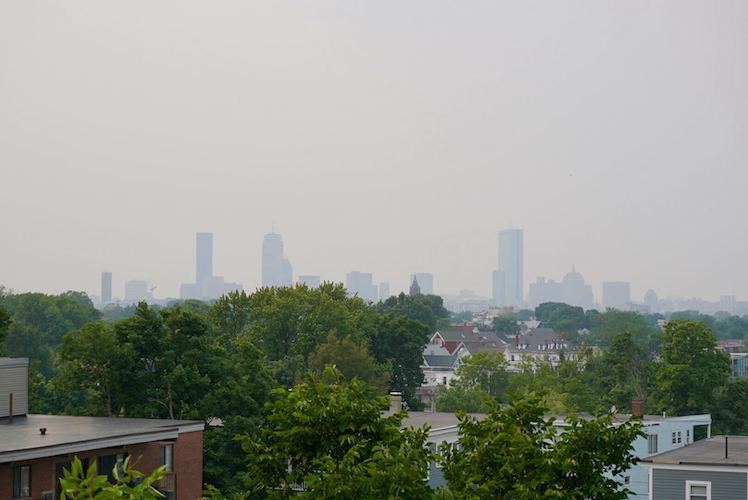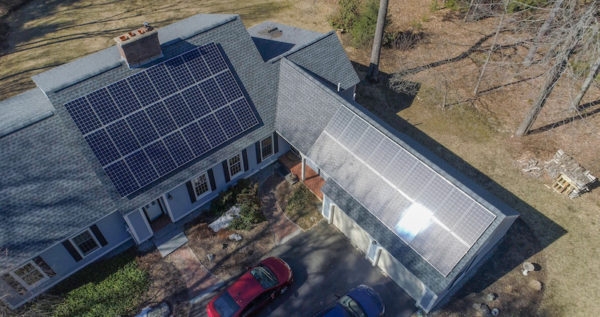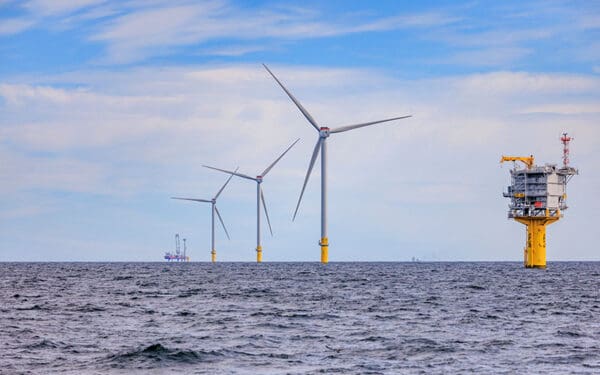
A hazy Boston skyline on June 6, 2023 as a result of Canadian wildfires is an example of the devastating impacts of climate change. Photo: Jake O'Neill
New Englanders have railed about the cold in June and the heat in January. We’ve complained about snowfall (nine feet of snow in 2015!) or the lack of snow. But this year, we’ve had something new to complain about – smoke.
Yes, smoke.
In the past few weeks, New England states and large portions of the Midwest and the South have grappled with hazy skies and dangerously poor air quality thanks to wildfires raging in the eastern Canadian provinces of Quebec and Nova Scotia. This week, air quality alerts were issued in Connecticut, Massachusetts, New Hampshire, Rhode Island, and Vermont. Air in those states exceeded Federal air quality standards for 24-hour particle pollution concentrations.
In fact, this year’s fires are some of the worst Canada has experienced so early in fire season, with more than 6.7 million acres already burned. In Halifax, more than 26,000 people have had to evacuate, and more than 200 homes have been damaged or destroyed. Around New England, we’ve had to contend with irritated eyes and lungs, and worse. Studies suggest that where poor air quality persists due to wildfires, people suffer from increased cardiovascular disease, including strokes, heart attacks, and heart failure. These health impacts especially affect those – low income or communities of color – that are already disproportionately affected by both pollution and climate change.
There’s a meteorological reason for all this: Normally, air flows into the U.S. from Canada from the northwest, but this time, a clockwise flow around a zone of high pressure settled over New England and southern Quebec is directing smoke in our direction. New York and regions down to the Carolinas are experiencing the same sort of yellow haze that turns purple at dusk.
There’s also a climate cause for all this: the fires are raging during a multi-year Canadian drought and much warmer temperatures than average. This, scientists say, is a result of climate change. A United Nations report concludes that devastating wildfires worldwide will surge in the “global wildfire crisis” as climate change intensifies. Wildfires like the ones causing all the smoke around New England are likely to become more intense and more frequent, threatening not only biodiversity and ecosystems but our health. We saw similar conditions in 2021, when disastrous fires in California caused a thick plume of smoke to waft across the entire country, creating an eerily dimmed sun in cities across New England.
This is terrible news because burning forests devastate biodiversity and ecosystems and contribute to climate change. When forests burn, we lose trees that would otherwise store large amounts of carbon. Engulfed in flames, trees release carbon dioxide into the atmosphere, worsening global warming. In a calamitous death spiral, their incineration leads to more droughts, higher temperatures, and ultimately more wildfires. And after they’ve been blackened to a char, burnt forests continue to release carbon dioxide through decomposition. Not good.
If we need any more of a wake-up call that now is the time to get serious about climate change, our smoke-choked skies should be it. We must clean up our act and commit even more fervently to controlling carbon pollution. Where there’s smoke, there’s fire. And this time, the fires and the smoke signals they’re sending tell us to get our carbon pollution house in order before it’s too late.



